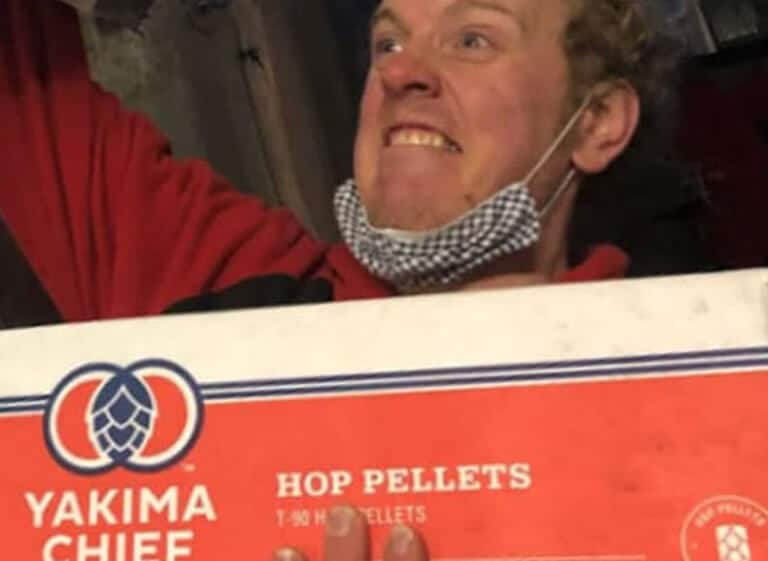
You may have seen in some of our recent posts we’ve been talking about “dry-hopping” some of our seasonal brews like Ukuku & Cub, but what exactly are we talking about and why do we do it?
Dry-hopping is by no means a new craze with evidence dating the practice back at least a 100 years, but whereas its purpose has changed from preservation to that of flavour it has also become much more prevalent over the last two decades with hop-forward styles dominating the market and arguably favoured by a majority of beer-drinkers. It would be unusual these days, for a brewery to not to utilise a dry hop in any of their product range.
So why do we add hops in the first place? In the process of making beer, we can add hops at various different times for different effects usually to alter Bitterness, Flavour or Aroma. During the boil, heat alters compounds called alpha acids within the hop that isomerise and form iso-alpha acids which give us the perception of bitterness in our beer. The longer we boil a hop, the more isomerisation occurs and the more bitterness we impart.
But alpha acids aren’t the only useful compound within hops that we are looking to exploit. Hops are full of essential oils, mostly monoterpenes, that are responsible for the strong smell and flavour we associate with the Hop plant, these are much more volatile than alpha acids, and will evaporate and alter readily at high temperatures within the boil. So to account for this, we can move additions for flavour and aroma towards the end of the boil to try and retain some of those volatile compounds, or into a cooler whirlpool stage or even cooler still we can add during or post-fermentation.
The latter being what we refer to as “Dry-Hopping” – Simply adding Hops into beer at a cooler stage during or post fermentation.
Simple on the surface perhaps, but as brewers, we can play around with the parameters of our dry hopping regime to tweak our products to fit our brief. The main parameters at play are;
We also have to look out for an effect called “Hop Creep” whereby if we add a large amount of hop matter, we also add a large amount of enzyme found in the hop leaf or bract, these enzymes can break down previously unfermentable sugars, which any residual yeast will happily consume, leading to our gravity “creeping” down and our ABV “creeping” up. Not only is this an issue for the strength of our beer, but if done at lower than fermentation temperatures we could cause off flavours in our beer which wont be cleaned up by any active fermentation process, or even worse if we leave fermentable sugars in beer that is then packaged with residual yeast we could get re-fermentation in package, leading to off-flavours or even worse potential for popping bottles and cans which nobody wants.
All in all, there are pro’s and con’s, but such is life. Dry hopping when used effectively gives way to some incredible tasting beers, hopefully one of which is hiding in my fridge for me to go and seek out.
Much Love
Rob
Join our mailing list and receive a 10% off voucher for your first purchase!
| Cookie | Duration | Description |
|---|---|---|
| cookielawinfo-checkbox-analytics | 11 months | This cookie is set by GDPR Cookie Consent plugin. The cookie is used to store the user consent for the cookies in the category "Analytics". |
| cookielawinfo-checkbox-functional | 11 months | The cookie is set by GDPR cookie consent to record the user consent for the cookies in the category "Functional". |
| cookielawinfo-checkbox-necessary | 11 months | This cookie is set by GDPR Cookie Consent plugin. The cookies is used to store the user consent for the cookies in the category "Necessary". |
| cookielawinfo-checkbox-others | 11 months | This cookie is set by GDPR Cookie Consent plugin. The cookie is used to store the user consent for the cookies in the category "Other. |
| cookielawinfo-checkbox-performance | 11 months | This cookie is set by GDPR Cookie Consent plugin. The cookie is used to store the user consent for the cookies in the category "Performance". |
| viewed_cookie_policy | 11 months | The cookie is set by the GDPR Cookie Consent plugin and is used to store whether or not user has consented to the use of cookies. It does not store any personal data. |